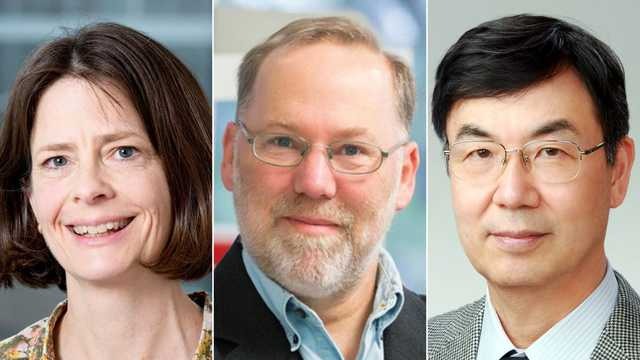
The 2025 Nobel Prize in Physiology or Medicine has been awarded to three distinguished scientists for their groundbreaking discoveries that revolutionized our understanding of how the human immune system maintains balance and prevents autoimmune diseases.
The Winners and Their Achievement
Dr. Mary E. Brunkow (Institute for Systems Biology, Seattle), Dr. Fred Ramsdell (Sonoma Biotherapeutics, California), and Dr. Shimon Sakaguchi (Osaka University, Japan) will share the prestigious award and prize money of 11 million Swedish kronor (approximately $1.2 million) for their fundamental discoveries concerning peripheral immune tolerance.
The Nobel Assembly at the Karolinska Institute announced on October 6, 2025, that these scientists have “laid the foundation for a new field of research and spurred the development of new treatments, for example for cancer and autoimmune diseases”.
The Revolutionary Discovery: Regulatory T Cells
What They Discovered
The three laureates identified a previously unknown mechanism by which the immune system prevents harmful attacks on the body’s own tissues. Their work centered on regulatory T cells (Tregs) – specialized immune cells that act like security guards, monitoring and controlling other immune cells to prevent autoimmune diseases.
Before their discoveries, scientists believed immune tolerance developed only through “central tolerance” in the thymus gland. The Nobel winners proved that a second, equally important mechanism exists in the peripheral tissues throughout the body – hence the term “peripheral immune tolerance”.
The Scientific Journey
Shimon Sakaguchi’s Breakthrough (1995)
Japanese scientist Shimon Sakaguchi made the initial groundbreaking discovery in 1995 when he identified regulatory T cells in mice. Working at the Aichi Cancer Center Research Institute, he demonstrated that these special T cells actively suppress harmful immune responses.
His key experiment involved removing the thymus from newborn mice. Instead of weakening their immune systems as expected, these mice developed severe autoimmune diseases. When Sakaguchi transferred normal T cells back to these mice, he could prevent the autoimmune conditions – proving the existence of immune cells that actively control other immune responses.
Brunkow and Ramsdell’s Genetic Discovery (2001)
American scientists Mary Brunkow and Fred Ramsdell, working at Celltech R&D in Washington, identified the genetic basis for this immune control mechanism. They studied “scurfy” mice – a strain that developed severe autoimmune symptoms and died within weeks of birth.
Through painstaking genetic mapping, they identified the defective gene responsible for this condition, which they named FOXP3 (Forkhead Box P3). This gene controls the development and function of regulatory T cells.
The Final Connection (2003)
Sakaguchi provided the crucial link by demonstrating that the FOXP3 gene directly controls regulatory T cell development. This unified all three scientists’ work: Brunkow and Ramsdell had found the genetic key, while Sakaguchi had identified the cellular guardians it controlled.
Clinical Significance and Medical Applications
IPEX Syndrome: When the System Fails
The clinical importance of their discoveries became evident through IPEX syndrome (Immune Dysregulation, Polyendocrinopathy, Enteropathy, X-linked), a rare but severe autoimmune disorder caused by FOXP3 gene mutations.
Children with IPEX syndrome develop multiple autoimmune conditions within months of birth, including:
Severe intestinal inflammation (90% of cases)
Type 1 diabetes and other hormone disorders (65% of cases)
Skin inflammation and rashes (73% of cases)
Blood disorders, kidney and liver problems
Without treatment, IPEX syndrome is often fatal, demonstrating the critical importance of regulatory T cells in human health.
Revolutionary Treatment Applications
The discovery has opened unprecedented therapeutic opportunities:
Cancer Treatment
Regulatory T cells can both help and hinder cancer treatment. While they prevent autoimmune responses, they also suppress beneficial immune responses against tumors. Over 200 clinical trials are currently exploring ways to manipulate regulatory T cells for cancer therapy.
Autoimmune Disease Treatment
For conditions like rheumatoid arthritis, multiple sclerosis, and inflammatory bowel disease, researchers are developing therapies to enhance regulatory T cell function, potentially offering more targeted treatments than current broad immunosuppressive drugs.
Transplant Medicine
Regulatory T cells show promise in preventing organ transplant rejection by teaching the immune system to tolerate transplanted tissues without compromising overall immunity.
The Scientists Behind the Discovery
Mary E. Brunkow
Born in 1961 in Portland, Oregon, Brunkow earned her Ph.D. in molecular biology from Princeton University in 1991. She currently serves as Senior Program Manager at the Institute for Systems Biology in Seattle. Her background in studying “junk DNA” and genomic imprinting prepared her for identifying the mysterious FOXP3 gene.
Fred Ramsdell
Born in 1960 in Elmhurst, Illinois, Ramsdell received his Ph.D. from UCLA in 1987. He has successfully bridged academic research with biotechnology, co-founding Sonoma Biotherapeutics, which develops regulatory T cell therapies. Notably, he was unreachable during the Nobel announcement because he was hiking off-grid in Idaho.
Shimon Sakaguchi
Born in 1951 in Japan, Sakaguchi earned his M.D. from Kyoto University in 1976. His willingness to challenge scientific orthodoxy proved crucial – he pursued research on immune suppression when most scientists had abandoned the field. He currently serves as Distinguished Professor at Osaka University.
Global Impact and Future Prospects
The discoveries have transformed multiple fields of medicine:
Current Clinical Trials
More than 200 clinical trials worldwide are investigating regulatory T cell-based therapies, with promising early results in treating graft-versus-host disease, Crohn’s disease, and various cancers.
Autoimmune Disease Burden
With autoimmune diseases affecting 5-10% of the global population, these discoveries offer hope for millions of patients worldwide who currently rely on broad immunosuppressive treatments with significant side effects.
Cancer Treatment Revolution
Understanding regulatory T cells has contributed to the development of checkpoint inhibitor therapies, which have already revolutionized cancer treatment for many patients.
Recognition and Previous Awards
The 2025 Nobel Prize represents the culmination of decades of recognition. Ramsdell and Sakaguchi, along with Alexander Rudensky, received the prestigious Crafoord Prize in 2017 for their regulatory T cell research.
As Sakaguchi noted during the Nobel announcement, “I hope that research in this field will continue to advance so that our discoveries can be applied in treatments”. With the extensive pipeline of regulatory T cell therapies in clinical development, their discoveries continue to drive medical innovation and offer new hope for treating some of humanity’s most challenging diseases.
The 2025 Nobel Prize in Medicine thus honors discoveries that have not only advanced our fundamental understanding of immune system regulation but also opened new therapeutic frontiers for autoimmune diseases, cancer, and transplant medicine. Their work exemplifies how basic scientific research can lead to transformative medical applications that benefit patients worldwide.


